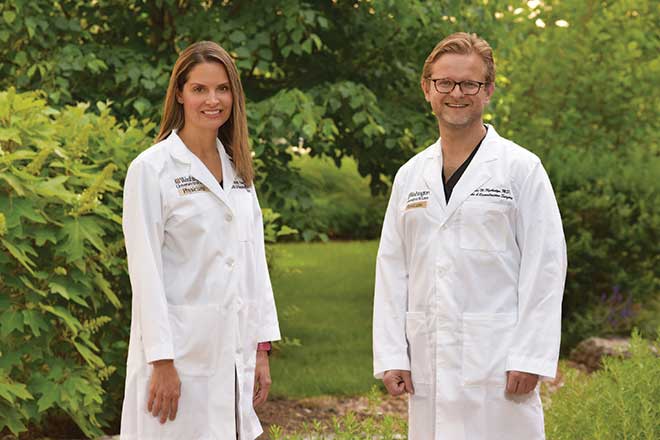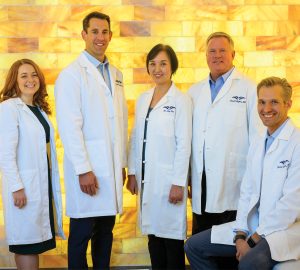It’s hard to know what came first: better, safer and less-invasive cosmetic procedures or the increased clientele seeking them. Either way, options for cosmetic improvement have greatly expanded over the years, and so has their popularity. In fact, a fast-growing group to seek a more youthful, invigorated look is men.
“There’s a definite upward trend in cosmetic surgery, and it’s much more socially acceptable,” reports Terence Myckatyn, M.D., director of cosmetic surgery at Washington University School of Medicine. While we may not typically associate males with surgeries meant solely to improve appearance, that is indeed what is happening. Their reasons, says Myckatyn, range from simply wanting to correct something that has bothered them for a while to feeling that a brighter, younger look will help them professionally.
Myckatyn, who practices at West County Plastic Surgeons of Washington University, reports the most popular procedures in men are blepharoplasty (eyelid surgery), gynecomastia (breast reduction surgery), and liposuction after massive weight loss. “Blepharoplasty removes excess skin, the muscle and fat deposits that create bags, and overall puffiness that can lead to a tired appearance,” Myckatyn explains, and it can be performed on either upper or lower lids or both.
During the lower lid procedure, a small incision is made either inside or outside the lash line for tissue to be removed, Myckatyn says. Upper lid surgery involves an incision made in the eyelid crease and occasionally includes the removal of a thin strip of bulky muscle called the orbicularis oculi as well. The upper lid procedure often takes place under local anesthetic, the lower lid most commonly requires general sedation.
While not as much related to maintaining a professional edge, gynecomastia can impact a man’s self-confidence, Myckatyn says. “Men frequently take their shirts off,” he notes, “and can be sensitive about their appearance in the chest area.” Patients are treated with ultrasonic-assisted liposuction to remove the fat, and excess skin is removed surgically if necessary. Breast reduction usually is performed under general anesthesia, with patients returning to work seven to 14 days after the operation.
Myckatyn and colleague Marissa Tenenbaum, M.D., also specialize in one of the newest forms of liposuction called HydraSolve, which uses tissue liquefaction technology (TLT). While some liposuction devices rely on heat or water to dislodge fat cells, Myckatyn says HydraSolve employs a synergy of both to separate fat cells from the body. “There’s far less pain, bleeding and bruising,” he says.
Myckatyn estimates that 25 percent of his cosmetic practice now is men (just a few years ago, that number was 10 percent) and attributes the rise in numbers in part to newer, more time-efficient technologies. “An entire back now can be lasered of hair in 10 minutes. And CoolSculpting, which reduces fat by freezing, takes little more than 30 minutes,” he notes. With those options, cosmetic improvement simply has become easier for professionals, and with ease has come greater acceptance. “It used to be that there was great stigma attached for men,” Myckatyn says. “Thankfully, that is changing.”
Pictured: Marissa Tenenbaum, M.D., and Terence Myckatyn, M.D.
Photo courtesy of Washington University Physicians
West County Plastic Surgeons of Washington University provides the latest cosmetic treatments. Many minimally invasive procedures increasingly popular with males are available, including blepharoplasty, gynecomasty and liposuction. For more information, call 314-996-8800 or visit westcountyplasticsurgeons.wustl.edu.
Cover courtesy of Washington University Physicians








